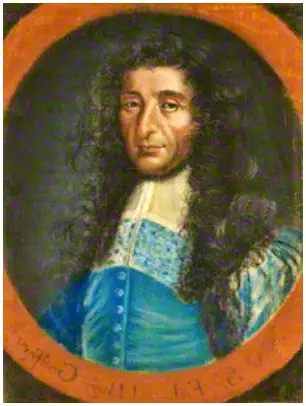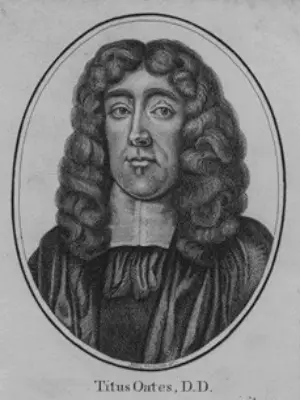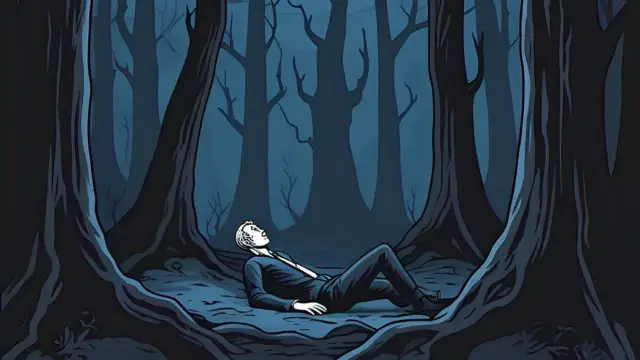Long before Primrose Hill in London became a hotspot for celebrities, it was a quiet area of fields and farmland. Known for its yellow spring flowers and brambles, it was an unlikely setting for one of the most infamous murders in British history.
On the afternoon of Thursday, October 17th, 1768, two men, Bromwell and Walters, sought shelter from a storm in the White House tavern (later known as the Chalk Hill Farm tavern). Little did they know, their discovery that day would unravel a mystery that gripped the nation.
A Grisly Discovery
As the rain poured, Bromwell and Walters mentioned seeing a cane and gloves in the bushes. The tavern landlord, John Rawson, offered them a shilling’s worth of ale to retrieve the items. When the rain eased, they returned and made a horrifying discovery. Hidden in the brambles was the body of a man.

The body was identified as Sir Edmund Berry Godfrey, a well-known magistrate who had been missing for five days. He had been brutally murdered, with a sword thrust through his body and signs of strangulation. The crime scene suggested he had been killed elsewhere and dumped in the ditc.
The Investigation Begins
Sir Edmund’s body was taken to the tavern, where it was examined. He had been strangled with a piece of linen cloth, and his neck was broken. There were bruises on his chest and stomach, indicating he had been stamped on or beaten. The sword used to stab him was his own, and the lack of blood at the scene suggested he was stabbed after death.
Witnesses confirmed the body hadn’t been in the ditch earlier in the week. Sir Edmund was last seen alive on October 12th. The fact that he still had his rings and a large sum of money ruled out robbery as a motive.

Who Was Sir Edmund Berry Godfrey?
Sir Edmund was a respected coal and firewood merchant who became a Justice of the Peace. He had served London during the plague of 1665, earning a knighthood for his efforts. Known for his eccentricity, he preferred the company of working-class men over his peers.
Despite being a strict Anglican, Sir Edmund had close Catholic friends. This connection would later become central to the mystery of his murder.
Anti-Catholic Sentiment in 17th-Century England
The murder occurred during a time of intense anti-Catholic sentiment in England. The country had been deeply divided since Henry VIII’s split from the Catholic Church. Protestants and Catholics vied for power, with plots and conspiracies fueling the tension.
When Charles II became king in 1660, fears grew that he would restore Catholicism. His wife, Catherine of Braganza, and his brother, the Duke of York, were devout Catholics. These fears were heightened by the secret Treaty of Dover, in which Charles agreed to convert to Catholicism in exchange for French support.

The Titus Oates Conspiracy
In September 1678, Sir Edmund was asked to hear an oath from Titus Oates, a former Anglican minister who claimed to have evidence of a Catholic plot to assassinate the king. Oates’s claims were met with skepticism, but Sir Edmund’s murder changed everything.
Rumors spread that Sir Edmund had been killed to silence him. Oates’s conspiracy theory gained traction, and anti-Catholic hysteria swept through London. Ballads, medals, and even daggers were produced to commemorate Sir Edmund’s death.
The Aftermath
Sir Edmund’s body was laid in state for two days, with thousands lining up to pay their respects. His funeral procession included seventy-two clergymen, and Dr Lloyd delivered a eulogy under heavy guard.
Despite the public outcry, the murderer was never identified. The case remains one of history’s most enduring mysteries.
Why Does This Story Matter?
The murder of Sir Edmund Berry Godfrey is more than a historical curiosity. It highlights the dangers of political and religious extremism. The anti-Catholic hysteria that followed his death shows how fear and misinformation can divide a society.
Today, Primrose Hill is a peaceful park, but its dark past serves as a reminder of a time when London was gripped by fear and suspicion.
By exploring this fascinating story, we gain insight into a pivotal moment in British history. Sir Edmund’s murder remains unsolved, but its impact on society is undeniable. Let’s remember the lessons of the past as we navigate the challenges of the present.

